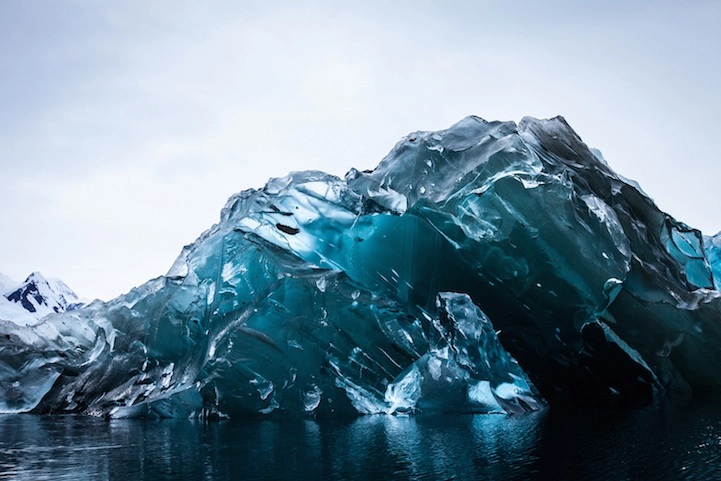
Alex Cornell, an interface designer and filmmaker, was treated to the rare sight of a massive iceberg that had recently flipped over, revealing an extraordinarily vivid blue underside, while on an expedition in Antarctica. According to Cornell, this magnificent specimen seems “more like a cosmic relic than anything earthly,” with the brilliantly polished ice varying in color from light blue to dark teal to near-black.
According to Jan Lieser, a marine glaciologist at the Antarctic Climate & Ecosystems Co-operative Research Center in Tasmania, icebergs are generally white due of trapped air bubbles. The iceberg’s deep blue hue implies that there is very no air included, most likely due to pressure from accumulated snow pressing out all the air.
An iceberg’s visible portion is only around 10% of its total mass, with the bulk of the mass concealed beneath the water’s surface. “While the iceberg is in the sea, it really melts,” Dr. Lieser adds, “causing the balance to become unbalanced and, at some point, which nobody can really foresee, these icebergs flip and spin.” Those incredible flips are powerful enough to cause tsunami-like conditions on occasion.


Alex Cornell’s website
via [Colossal], [Fstoppers]
